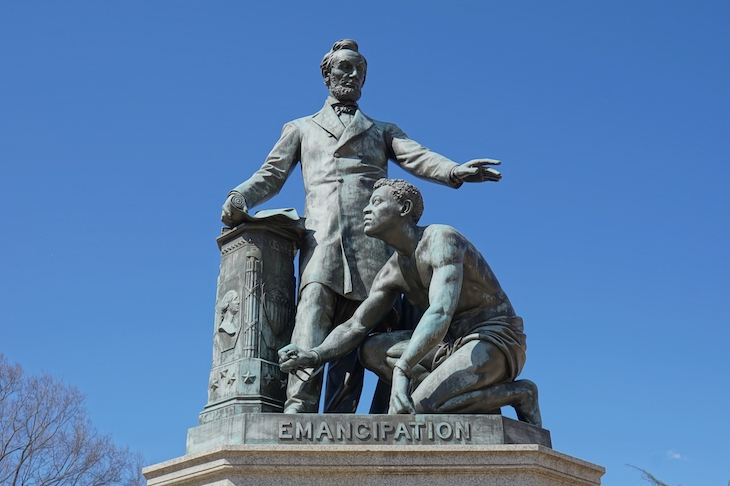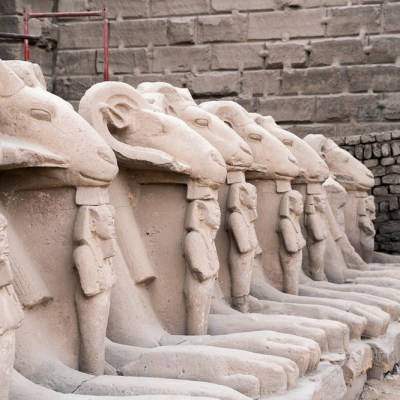In the spring of 1866, William Dean Howells wondered what monuments to the American Civil War would look like. Howells, who later became the celebrated ‘Dean’ of American literary realism, had served as American Consul in Venice for the war’s duration, and his hopes for commemorative statuary in the triumphant North betray the remove from which he experienced the war’s emotional and physical ferocity. His vision was progressive and productive: instead of mourning the dead, he contended, public monuments to the war should have the power to reform the communities that encountered them.
With the full force of northern victory and Lincoln’s Emancipation Proclamation behind him, he told the readers of the Atlantic Monthly that ‘[t]he idea of our war seems to have interpreted itself to us all as faith in the justice of our cause, and in our immutable destiny, as God’s agents, to give freedom to mankind; and the ideas of our peace are gratitude and exultant industry.’ Commemorating war from a position of peace, he maintained, involved building on the war’s gains rather than dwelling on its devastation and losses; in proving their ‘right to citizenship’ in a Union freshly dedicated to freedom, commemorative architecture and sculpture must prove ‘themselves adequate to express something of the spirit of the new order we have created here’.
Howells’ suggestive invocation of the new ‘rights to citizenship’ granted to emancipated and self-emancipated African Americans drives his point home: to earn their place in the post-war public sphere, monuments to the war must work collectively to bring the ‘new order’ declared by the Emancipation Proclamation into being. Strategically planted across the downtrodden mill towns and overworked industrial centres of the North, memorial fountains would bring ‘health, refreshment, and mercy’ to the poor and weary; public parks with triumphal arches would enable individuals from all walks of life to mingle together and ‘restore’ themselves; memorial halls, schools, and churches would re-dedicate communal forms of living, learning, and worship to the memory of the Union dead and the values, and freedoms, for which they’d fought. As well as healing individual and collective wounds, monuments to the war, Howells believed, could bring society into new configurations and expose communities to the values exemplified by the Federal cause. Socialising with statuary might help the public reimagine itself on freedom’s terms – as a national collective comprised of Black citizens, as well as white.
A group of Union veterans from the Civil War in front of the Major General John Fulton Reynolds monument in Gettysburg, Pennsylvania (c. 1910). Library of Congress, Washington, D.C.

Howells’ concept of commemorative statuary as a morally invigorating, transformative force may seem profoundly alien at a moment in which communities in the US and the UK find themselves contending with the seeming fixity of monumental forms. As the historian Kirk Savage has observed, ‘public monuments are the most conservative of commemorative forms, precisely because they are meant to last, unchanged, forever’. In seeking to set a version of history in stone, monuments assert a claim to public consensus regarding the shape that history takes: they assume and project narrative authority. Put another way, monuments depend on particular decisions, and those with the power to make those decisions, to exist; but they rarely disclose this process to the members of the public who view them in situ.
In the very act of looking up at the statue of Confederate general Robert E. Lee in Richmond, Virginia, for example, we are asked to recognise and celebrate the figure atop the horse and the values he represents. Those values, of heroism and martial prowess exerted in the name of the Confederacy, are conveyed in a visual language that extends from the columns flanking the elaborate granite base to the stance of Lee’s horse. And while visual symbolism can be a levelling force, as a site of shared legibility, by its very nature symbolism thrives on omission: in casting Lee’s heroism, and the validity of his cause, as self-evident, this monument implicitly affirms the belief in white supremacy upon which the Confederacy was built, and in which Lee himself participated. In celebrating white supremacy in these terms, the monument also negates the violence of that belief and the system of enslavement that was integral to it. As many protestors see it, the prominent public presence of such monuments only compounds their conservatism, lending force to the values they uphold, and both advocating and perpetuating their purportedly definitive take on the past. In a world of changing and changed values, the unyielding conservatism of Civil War monuments seems inherently problematic at best; in the South, it has proven a rallying point for continuing white supremacist violence.
Scene at the unveiling of the monument to General Robert E. Lee at Richmond, Virginia (1890), drawn by Thure De Thulstrup from a photograph, published in Harper’s Weekly on 14 June 1890. Virginia Common Wealth Library, Richmond

Since New Orleans dismantled its Confederate monuments in 2017, and as other communities North and South continue to reckon with Civil War symbolism, faced with often stark divisions in opinion as well as the bureaucratic structures keeping it in place, there has been much public debate about the need for an antidote to monumental permanence. How do you change an object that appears, explicitly, to defy change? William Dean Howells’ belief in the transformative potential of monuments seems a good place to start, if only because it asks us to rethink the seemingly ‘fixed’ nature of such objects. If we begin to see Civil War monuments as the social experiments they were across 19th-century America – as a novel form of civic and political expression that generated strong feelings and heated debates – it becomes clear that monumental fixity is a fiction, albeit a powerful one.
As products of change, which sought to influence the crowds that gathered at their pedestals or reform the communities who moved in and around them, these objects were often contested and even tentative things. What we don’t see, when we look up at a monument, is the discussion and dissent that may have surrounded its design and dedication; we aren’t told who conceived of the statue, who funded it, who protested it, who built it and how much they were paid; we don’t hear the speeches that were used to justify its presence in the public sphere. What we forget are the ways in which some northern monuments, funded by big businesses, could be as insidious as Confederate statuary; what we overlook are the voices, white and Black, that criticised particular monuments from the moment of their dedication, as Frederick Douglass did during his oration at the unveiling of Thomas Ball’s ‘Freedman’s Memorial’ in Washington, D.C., in 1876. Where monuments offer definitive versions of history, their own histories reveal the counternarratives and neglected perspectives of a society that was still grappling with the meaning of Emancipation and Black civil rights. In a way, they are sites that both perpetuate and reflect the situation the US finds itself in today, and uncovering their histories can teach us a lot about the ways in which monuments gain validity, and how that validity can be tested.
The Freedman’s Memorial in Lincoln Park, Washington, D.C., erected in 1876. © David Tulchinsky/dreamstime.com

In recent years, I have been working with academic colleagues and public historians on a project which intends to challenge the fiction of fixity that hangs about these monuments, and offer people seeking change on either side of the Atlantic another way of assailing the seemingly unassailable. The Civil War Monuments Database, which I am co-creating with Jillian Caddell (University of Kent) and Alan Miller (University of St Andrews), in conjunction with a number of scholars in the US and the UK, is a long-term project which will map as many public, Civil War-related monuments as possible in the States and elsewhere. By incorporating unofficial or non-‘traditional’ forms of public art and commemoration – from neglected memorials and sites of re-enactment used to commemorate the heroism of African Americans on the Underground Railroad, to military relics enshrined in memorial halls, and metro stations named for Civil War Generals – it will also seek to alter what we think of as ‘monuments’ in the process.
Every entry will incorporate basic information about that monument: its location, material, date of dedication, cost, artist and so on. Our main undertaking, though, is to provide interpretive essays on all the monuments included – pieces that will uncover the sentiments that inspired particular statues, the speeches that celebrated them, the complaints lodged against them, and their afterlives, and disappearances, within a changing public sphere. While the map’s filters will offer users a way of exploring the rise of monument culture after the war, it is our hope that the interpretive essays – written by academics and curators, local and public historians, students and independent scholars – will become a useful resource for schools and universities, researchers and teachers and, most importantly, communities working out how to manage the monumental pieces of the past that remain in their towns and cities. The project is still in its early stages and seeking contributors, but we hope it might participate in debates about monument management and policy, as well as helping to foster an international perspective on an issue that looks likely to shape discussions about the artistic and collective uses of public space for years to come. William Dean Howells’ hopes for the restorative and transformative public commemoration of the Civil War may seem optimistic, but by finding ways to engage with, and respond to, the complex histories of the monuments themselves, they may yet come to pass.
Kristen Treen is a lecturer in American literature at the University of St Andrews. She can be contacted about the Civil War Monuments Database at ket4@st-andrews.ac.uk.



